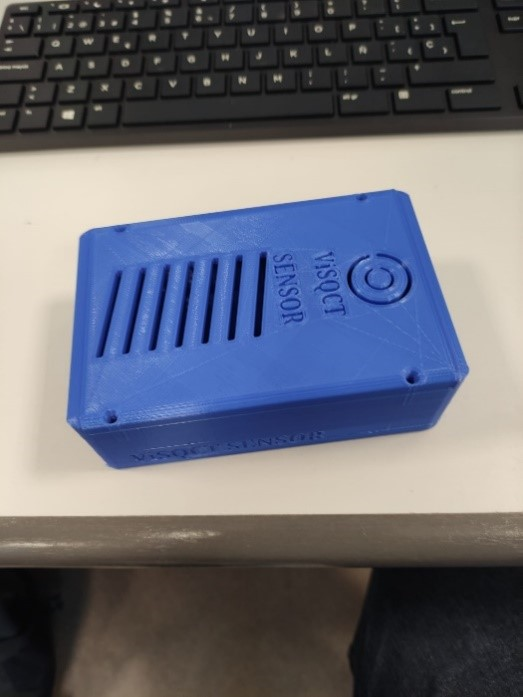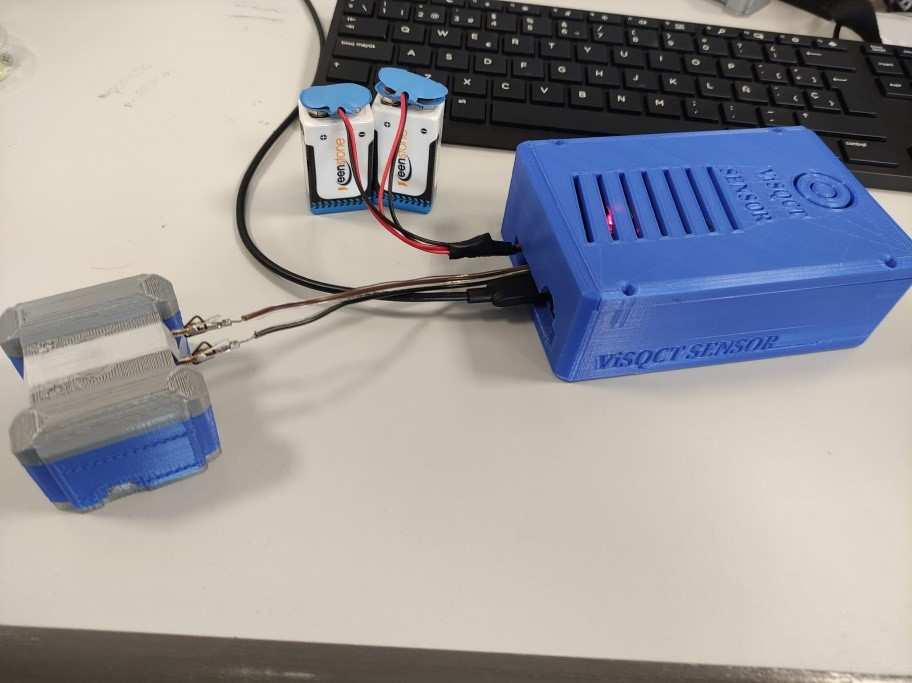Site card
Equipment for dynamic viscosity characterisation in biological fluids
Where:
Center for Biomedical Technology
Ubicación:
Laboratorio de Bioinstrumentación y Nanomedicina, Centro de Tecnología Biomédica (CTB)
Typology:
Equipamiento científico-Tecnológico
Manager: José Javier Serrano Olmedo
Email:
The ViSQCT sensor was developed in the Bioinstrumentation and Nanomedicine Laboratory to measure the viscosity of fluids using a small volume (approximately 50 µl). It works by using quartz crystal resonators (QCRs), which are inexpensive, small and accurate components. The QCRs used have gold electrodes and a fundamental resonance frequency of 10 MHz. The device consists of an electronic circuit, quartz crystal resonators, a crystal holder, batteries and control software.
Medicine, biology, physiology, biophysics
It measures the viscoelastic properties of fluids in contact with the quartz crystal surface. It can also monitor changes in the viscosity of a sample in real time.
Its use as a medical diagnostic tool is currently being validated by measuring samples of synovial fluid donated by hospitals. The initial hypothesis is that it is feasible to diagnose pathologies by measuring the viscosity of that fluid, establishing that a healthy fluid is more viscous than an unhealthy one. The intention is also to use it to measure the viscosity of cerebrospinal fluid, of which a very small volume is usually extracted for analysis and the viscosity of which is related to diseases such as meningitis. Its use in characterising viscosity in the formation of hydrogels has also been studied. Hydrogels are biomaterials with applications ranging from regenerative medicine to 3D bioprinting. In every case, it is important to measure the mechanical properties of the material (one of which is viscosity), as how it functions depends on them.
It comes about as an alternative to the current rheometry and viscometry equipment, which can be expensive, take up a lot of space and require a sample volume which, in many cases, is not feasible (such as in the medical field).
It should be noted that this device is in an early stage of development and that its functionality and number of applications may increase. Its low cost and portability make it of interest to the medical, pharmaceutical and research sectors.






